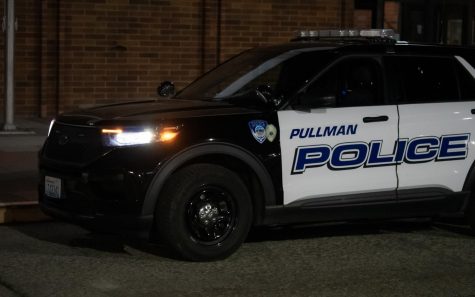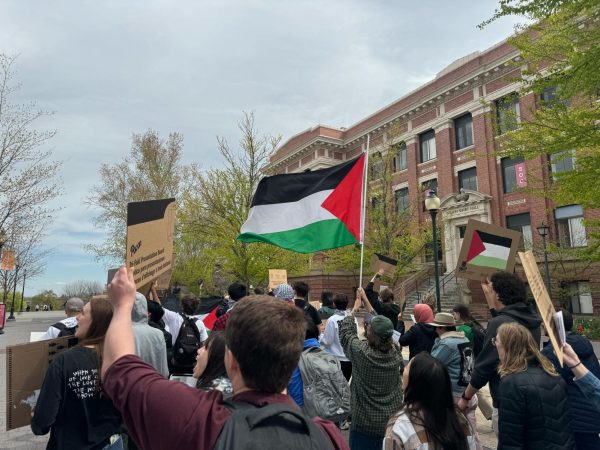Science 101 students stop wind, restore native species
October 27, 2014
Under the leadership of three Washington State University landscape architecture students, a team of three hundred Science 101 students will return life to the Eggert Family Farm prairies.
Plans for the prairies are centered on restoring the native plant and animal species to the area.
For years the wind on the Palouse has damaged the native prairie species the farm.
This project will be divided into four phases, which are predicted to be completed in three years and looks to improve the windy conditions for the native prairie species.
The first phase of the restoration project began one week ago and consisted of planting windbreakers around the area to control wind direction on the prairies.
On Friday, the group successfully planted the saplings along the site that will eventually become large enough to withstand strong wind currents.
“When they come in there will be three layers of plants. This will help shoot winds over the site rather than down the hills to prevent prairie damage,” said Bryan Navarro, project organizer and junior landscape architecture.
Phase two of the project will remove weeds on the site and eliminate dirt that has accumulated in the area over the years.
The third phase will lay out pathways through the prairie. Finally, phase four will finish up planting the remaining foliage.
Throughout the restoration process, eco-friendly methods such as, rain collectors will be in play to prevent any more harm to the fragile environment.
Re-used material from an urbanite pile on site will be utilized to construct an outdoor amphitheater in the prairie.
“We’re aiming for making the lowest environmental impact while we’re here working,” project organizer and junior landscape architecture student, Jeremy Auer, said.
In addition to creating a healthy habitat for plants and animals around the Palouse, the team said they also hope to make the prairie a place for humans too.
The restoration is anticipated to encourage more visitors and provide more information about caring for the environment.
“We’re planning on creating path ways and seating systems, so that people can have a welcoming interaction with the area,” project organizer and junior landscape architecture student, Taylor Weik, said.
“This will be a place for the community. There’s going to be educational opportunities for everyone who visits,” Auer continued.
Once all four phases are completed, the final product will include flower tapestry, tall trees, and a pond with an elevated infrastructure.
“The pond helps with improving amphibian reproduction and prevents damage to plants,” Auer said.




















